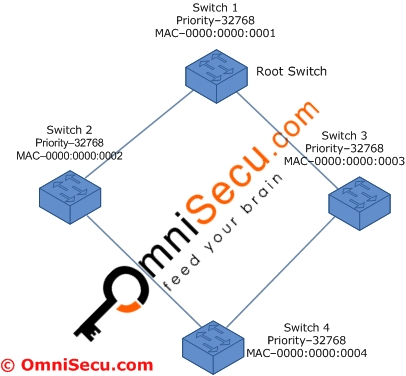What is a Root Bridge (Switch), Bridge (Switch) Priority Value and Bridge (Switch)ID
A Spanning Tree is an inverted tree. The Root bridge (switch) is a special bridge at the top of the Spanning Tree (inverted tree). The branches (Ethernet connections) are then branched out from the root switch, connecting to other switches in the Local Area Network (LAN).
All Bridges (Switches) are assigned a numerical value called bridge priority. The Bridge (Switch) priority value is used to find the Bridge (Swtich) ID.
The Switch ID is made from two values.
• The Switch Priority, which is a numerical value defined by IEEE 802.1D, which is equal to 32,768 by default.
• The MAC Address of the Switch.
If all the Switches in your Local Area Network (LAN) are configured with the default Switch Priority (32,768), the Switch MAC address will become the decisive factor in electing the Root Bridge (Switch).The Bridge (Switch) with the lowest MAC Adress is then elected as Root Bridge (Switch).
The following example shows four switches with default priority value. Here Switch 1 is the Root Bridge (Switch) since it has the lowest MAC address.

If you want one particular switch to be the Root Bridge (Switch), change the priority to a lower value than 32,768.